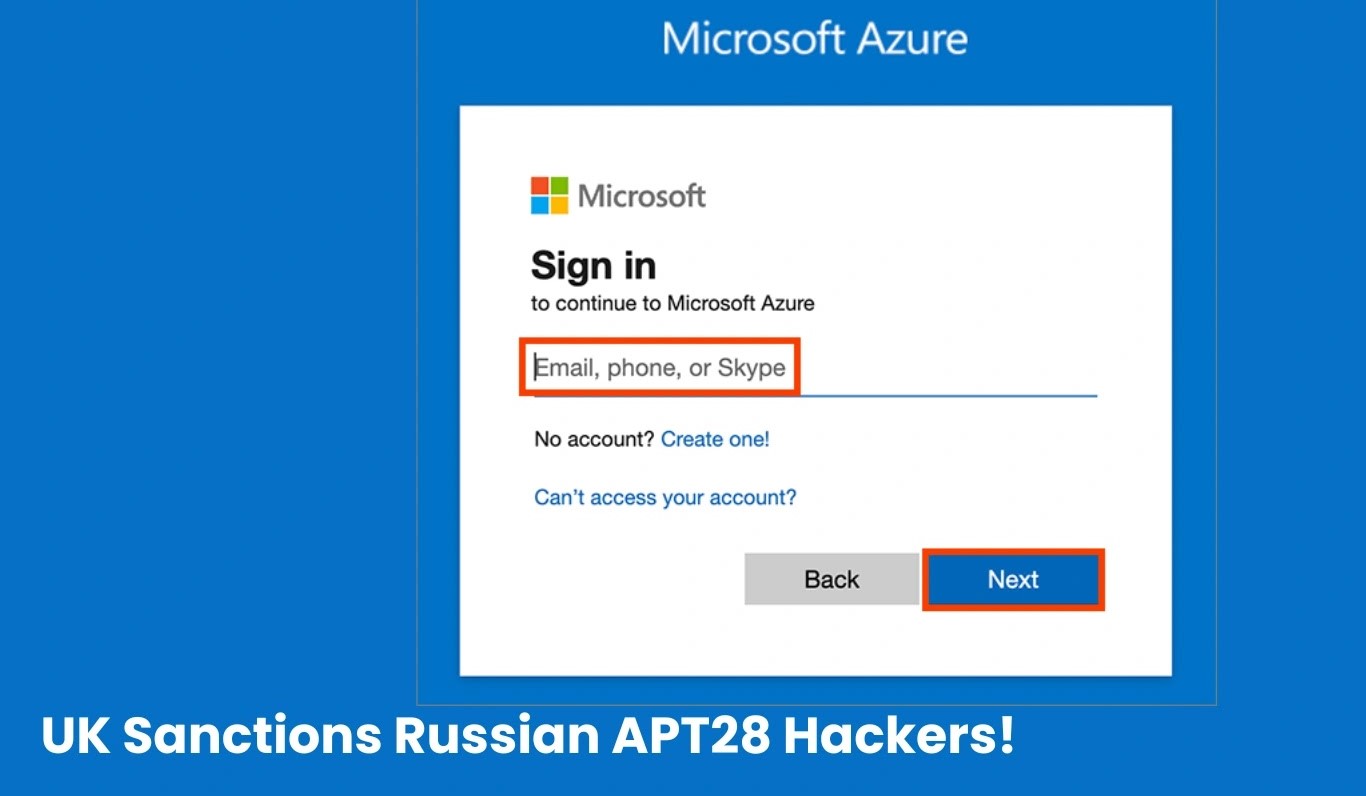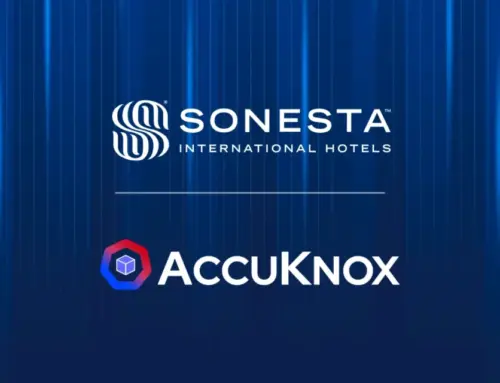
UK Sanctions Russian APT 28 Hackers for Attacking Microsoft Cloud Service Login Details
UK Sanctions Russian APT 28: A Deep Dive into the Microsoft Cloud Credential Theft Campaign
The digital battlefield is constantly evolving, with nation-state actors employing increasingly sophisticated methods to compromise critical infrastructure and sensitive data. Recently, the UK government has taken a definitive stance against such aggression, imposing sanctions on Russian military intelligence units and 18 individuals directly implicated in a significant cyber espionage campaign. This action targets the notorious Advanced Persistent Threat (APT) group known as APT 28, often linked to Russia’s GRU (Main Intelligence Directorate), for their audacious attacks targeting Microsoft cloud services. This post will dissect the specifics of their operation, the tools they employed, and essential remediation strategies for organizations safeguarding their digital assets.
The APT 28 Threat: A Long History of Cyber Espionage
APT 28, also widely known as Fancy Bear, Strontium, or Pawn Storm, has a long and documented history of engaging in state-sponsored cyber espionage. Their targets typically include government organizations, defense contractors, political entities, and critical infrastructure across the globe. Their modus operandi often involves spear-phishing campaigns, zero-day exploits, and sophisticated custom malware to achieve persistent access and exfiltrate sensitive information. The recent sanctions highlight a renewed focus on credential theft from cloud services, a growing trend among advanced threat actors.
AUTHENTIC ANTICS: The New Malware on the Block
A critical revelation from the National Cyber Security Centre (NCSC) is the deployment of a previously unknown malware strain dubbed AUTHENTIC ANTICS. This bespoke tool was specifically engineered to harvest login credentials from Microsoft cloud services. While precise technical details of AUTHENTIC ANTICS are still emerging, its purpose is clear: to bypass existing security measures and steal the keys to an organization’s digital kingdom. The use of novel malware underscores the adaptive nature of APT 28 and their continuous investment in developing tools to circumvent contemporary cybersecurity defenses.
The Mechanics of Microsoft Cloud Credential Theft
The NCSC’s investigation indicates that APT 28’s campaign specifically aimed at compromising Microsoft cloud service login details. This likely involves a multi-stage attack:
- Initial Access: This could be achieved through various means, such as watering hole attacks, supply chain compromises, or highly targeted spear-phishing emails designed to trick users into revealing their credentials or executing malicious code.
- Malware Deployment: Once initial access is gained, AUTHENTIC ANTICS is deployed to the compromised system.
- Credential Harvesting: AUTHENTIC ANTICS then performs its primary function: scraping session tokens, cookies, or directly intercepting login attempts to capture usernames and passwords. This could involve manipulating authentication flows or exploiting vulnerabilities in cloud service configurations.
- Lateral Movement and Persistence: Stolen credentials are then used to move laterally within the target’s cloud environment, escalating privileges, and establishing persistent access for long-term espionage.
Remediation Actions: Fortifying Your Microsoft Cloud Defenses
Given the sophistication of APT 28’s capabilities and their focus on cloud services, organizations must take proactive steps to secure their Microsoft cloud environments. The following remediation actions are crucial:
- Multi-Factor Authentication (MFA) Enforcement: This is arguably the most effective mitigation against credential theft. Ensure MFA is enforced for all users, especially administrators, across all Microsoft cloud services. Consider stronger MFA methods like FIDO2 security keys or authenticator apps over SMS-based options.
- Regular Credential Rotation: Implement a policy for regular password changes, especially for privileged accounts. Additionally, consider rotating API keys and service account credentials.
- Robust Identity and Access Management (IAM):
- Principle of Least Privilege: Grant users and applications only the permissions absolutely necessary to perform their functions. Regularly review and revoke excessive permissions.
- Conditional Access Policies: Implement policies that restrict access based on user location, device compliance, risk level, and other contextual factors.
- Session Management: Monitor and enforce short session lifetimes for highly privileged accounts to reduce the window of opportunity for attackers to utilize stolen tokens.
- Enhanced Logging and Monitoring:
- Audit Logs: Configure comprehensive audit logging for all activities within your Microsoft cloud environment, including login attempts, administrative actions, and data access.
- Security Information and Event Management (SIEM): Integrate cloud logs with your SIEM solution for centralized analysis and alert generation. Look for anomalous login patterns (e.g., impossible travel, logins from unusual geographies).
- Security Awareness Training: Educate users about the dangers of phishing, social engineering, and the importance of strong passwords and MFA. Simulate phishing attacks to gauge user susceptibility.
- Endpoint Detection and Response (EDR) & Antivirus: Ensure all endpoints accessing cloud services have robust EDR and antivirus solutions with up-to-date threat definitions. This helps detect and prevent the initial deployment of malware like AUTHENTIC ANTICS.
- Regular Security Assessments: Conduct regular penetration testing, vulnerability assessments, and security audits of your cloud configurations to identify weaknesses before attackers exploit them.
- Leverage Microsoft Security Tools: Utilize built-in security features within Microsoft 365 and Azure, such as Azure AD Identity Protection, Microsoft Defender for Cloud Apps, and Microsoft Sentinel.
Tools for Cloud Security and Detection
Effective cloud security requires a combination of robust policies, vigilant monitoring, and the right tools. Here’s a brief overview of relevant tool categories:
| Tool Category | Purpose | Examples/Description |
|---|---|---|
| Cloud Security Posture Management (CSPM) | Automated assessment and remediation of misconfigurations in cloud environments. | Microsoft Defender for Cloud, Wiz, Orca Security |
| Cloud Workload Protection Platform (CWPP) | Protects compute workloads (VMs, containers, serverless) in the cloud. | Microsoft Defender for Cloud, CrowdStrike Cloud Security, Prisma Cloud |
| Security Information and Event Management (SIEM) | Collects, analyzes, and presents security event data for threat detection and compliance. | Microsoft Sentinel, Splunk, Exabeam |
| Identity Protection | Detects and responds to identity-based risks, like compromised credentials. | Azure AD Identity Protection, Okta Adaptive MFA |
| Endpoint Detection and Response (EDR) | Monitors endpoints for malicious activity, provides detection and immediate response capabilities. | Microsoft Defender for Endpoint, CrowdStrike Falcon, SentinelOne |
Conclusion: The Ongoing Battle for Cloud Security
The UK’s sanctions against APT 28 underscore the critical need for global cooperation in combating state-sponsored cyber threats. The incident involving AUTHENTIC ANTICS and the targeting of Microsoft cloud credentials serves as a stark reminder that even seemingly secure cloud environments are prime targets. Organizations must embrace a security-first mindset, continuously evaluate their cloud security posture, and empower their security teams with the knowledge and tools necessary to defend against sophisticated and adaptive adversaries like APT 28. Maintaining robust identity and access management, pervasive MFA, and advanced threat detection capabilities are no longer optional but essential safeguards in the evolving landscape of cyber warfare.





